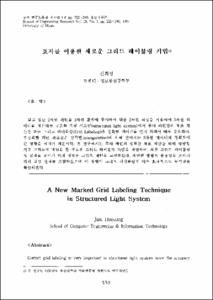Peroxide와 자간전증 환자의 혈청 관류에 따른 제대정맥의 prostaglandin 생성의 변화
- Alternative Title
- Effects of peroxides and preeclamptic sera on prostaglandin release by perfused human umbilical cord vein
- Abstract
- Objective
This study was performed to evaluate the prostaglandin secretion rates in human umbilical vein with preeclamptic sera and peroxide perfusion.
Study design
Isolated human umbilical cords(n=10) were perfused for 30-minute intervals with cord buffer, 15% normal pregnant sera and preeclamptic patient sera, 100 mol/L t-butyl hydroperoxide alone, and after perfusion with low-dose aspirin(5×10( )mol/L). Cord buffer gassed with 95% oxygen and 5% carbon dioxide and warmed to 37℃ was used for the perfusion buffer. Effluent flow rates were measured during each experimental treatment. Effluent samples were measured for 6-keto prostaglandin Flα and thromboxane B( ) by enzyme immunoassays.
Results
The concentrations of 6-keto prostaglandin F( )α in preeclamptic sera were significantly higher than those in normal pregnant sera.(989.3849 ± 1602.927 vs. 1.3116 ± 1.22085 ng/ml, mean ± SD, p<0.01). However, the concentrations of thromboxane B( ) were not different between normal pregnant sera and preeclamptic sera. The secretion rate of 6-keto-prostaglandin F( )α in human umbilical endothelial cells was not significantly different(p=0.77) between two groups. Comparing to normal pregnant sera, the secretion rate of thromboxane B( ) was significantly increased(p<0.01) after preeclamptic sera perfusion. The secretion rate of 6-keto-prostaglandin F( ) was significantly increased(p<0.01) following peroxide perfusion and that was significantly decreased by aspirin. The secretion rate of thromboxane B( ) was not significantly different between preeclamptic sera and peroxide alone or subsequent perfusion with aspirin.
Conclusions
(1) Preeclamptic sera stimulate thromboxane production rather than prostacyclin production by endothelial cells of human umbilical vein in vitro. (2) Peroxide stimulates the secretion of both prostacyclin and thromboxane, and low dose aspirin mitigates hydroperoxide-induced prostacyclin secretion. We confirmed that thromboxane secretion is stimulated by preeclamptic sera and the role of peroxide in prostaglandin secretion. We established the perfusion system using human umbilical vein through this study. This perfusion system may be useful to understand the pathophysiology of preeclampsia.
Objective
This study was performed to evaluate the prostaglandin secretion rates in human umbilical vein with preeclamptic sera and peroxide perfusion.
Study design
Isolated human umbilical cords(n=10) were perfused for 30-minute intervals with cord buffer, 15% normal pregnant sera and preeclamptic patient sera, 100 mol/L t-butyl hydroperoxide alone, and after perfusion with low-dose aspirin(5×10( )mol/L). Cord buffer gassed with 95% oxygen and 5% carbon dioxide and warmed to 37℃ was used for the perfusion buffer. Effluent flow rates were measured during each experimental treatment. Effluent samples were measured for 6-keto prostaglandin Flα and thromboxane B( ) by enzyme immunoassays.
Results
The concentrations of 6-keto prostaglandin F( )α in preeclamptic sera were significantly higher than those in normal pregnant sera.(989.3849 ± 1602.927 vs. 1.3116 ± 1.22085 ng/ml, mean ± SD, p<0.01). However, the concentrations of thromboxane B( ) were not different between normal pregnant sera and preeclamptic sera. The secretion rate of 6-keto-prostaglandin F( )α in human umbilical endothelial cells was not significantly different(p=0.77) between two groups. Comparing to normal pregnant sera, the secretion rate of thromboxane B( ) was significantly increased(p<0.01) after preeclamptic sera perfusion. The secretion rate of 6-keto-prostaglandin F( ) was significantly increased(p<0.01) following peroxide perfusion and that was significantly decreased by aspirin. The secretion rate of thromboxane B( ) was not significantly different between preeclamptic sera and peroxide alone or subsequent perfusion with aspirin.
Conclusions
(1) Preeclamptic sera stimulate thromboxane production rather than prostacyclin production by endothelial cells of human umbilical vein in vitro. (2) Peroxide stimulates the secretion of both prostacyclin and thromboxane, and low dose aspirin mitigates hydroperoxide-induced prostacyclin secretion. We confirmed that thromboxane secretion is stimulated by preeclamptic sera and the role of peroxide in prostaglandin secretion. We established the perfusion system using human umbilical vein through this study. This perfusion system may be useful to understand the pathophysiology of preeclampsia.
- Issued Date
- 1996
- Type
- Research Laboratory
- Alternative Author(s)
- Mok, Jung-Eun; Kim, Ahm; Lee, Pyl-Ryang; Han, Ji-Soo; Lee, In-Sik
- Publisher
- 울산의대학술지
- Language
- kor
- Rights
- 울산대학교 저작물은 저작권에 의해 보호받습니다.
- Citation Volume
- 5
- Citation Number
- 1
- Citation Start Page
- 76
- Citation End Page
- 82
- Appears in Collections:
- Research Laboratory > The ULSAN university medical journal
- 파일 목록
-
-
Download
 000002024975.pdf
기타 데이터 / 391.35 kB / Adobe PDF
000002024975.pdf
기타 데이터 / 391.35 kB / Adobe PDF
-
Items in Repository are protected by copyright, with all rights reserved, unless otherwise indicated.